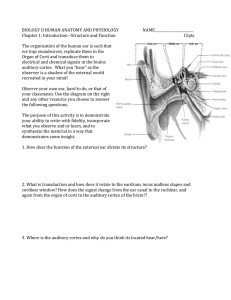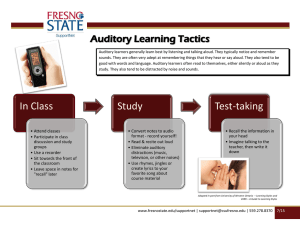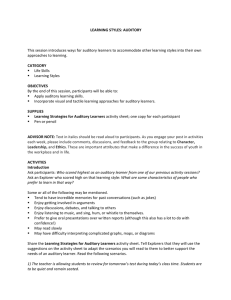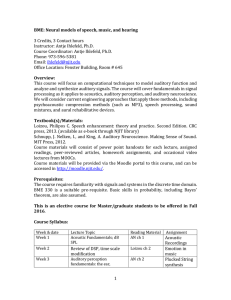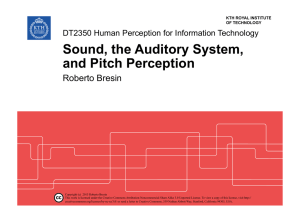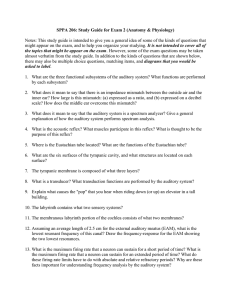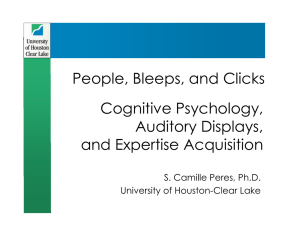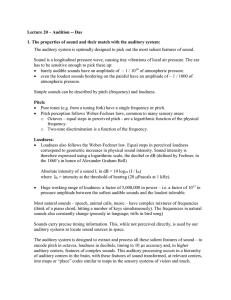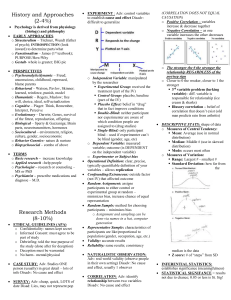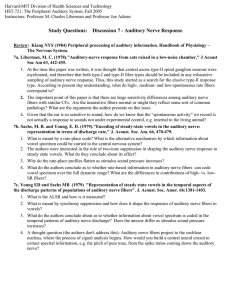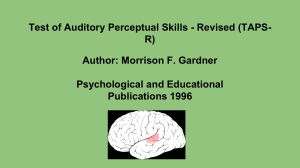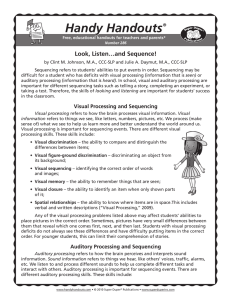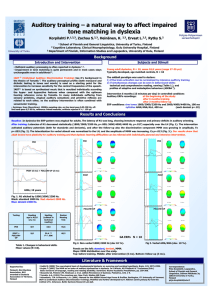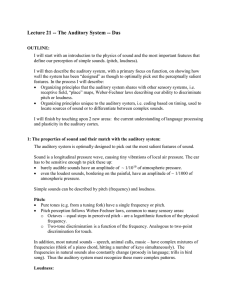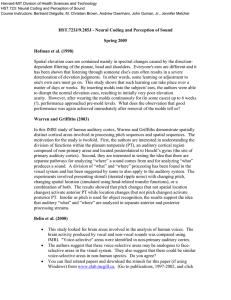9.01 - Neuroscience & Behavior Fall 2003 Massachusetts Institute of Technology
advertisement
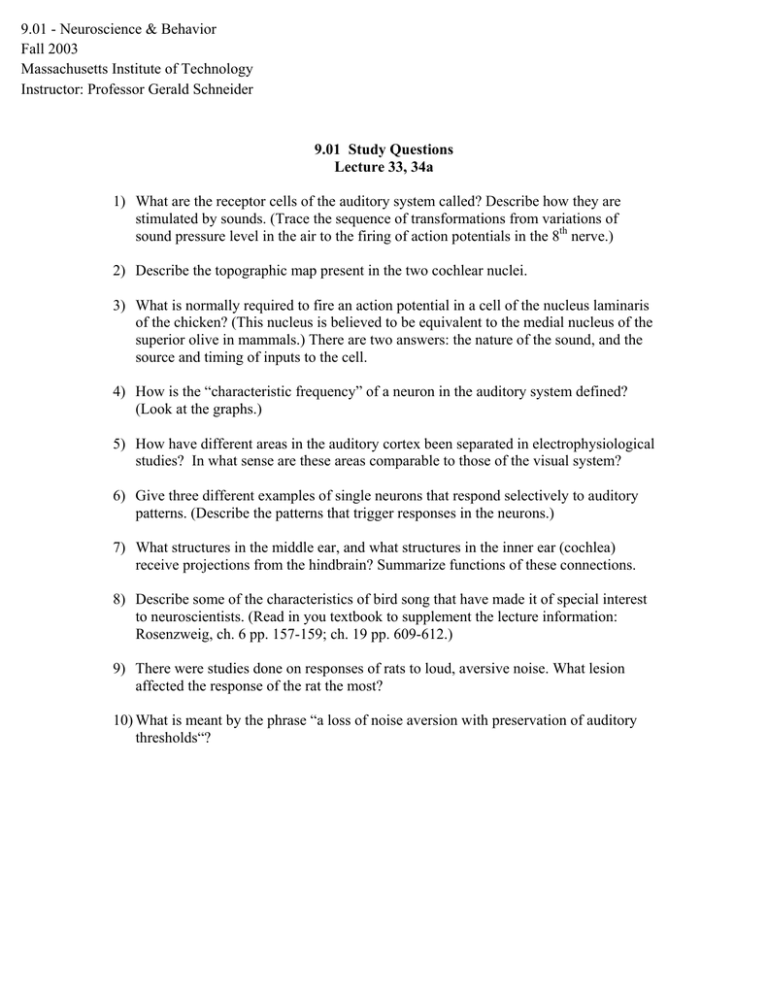
9.01 - Neuroscience & Behavior Fall 2003 Massachusetts Institute of Technology Instructor: Professor Gerald Schneider 9.01 Study Questions Lecture 33, 34a 1) What are the receptor cells of the auditory system called? Describe how they are stimulated by sounds. (Trace the sequence of transformations from variations of sound pressure level in the air to the firing of action potentials in the 8th nerve.) 2) Describe the topographic map present in the two cochlear nuclei. 3) What is normally required to fire an action potential in a cell of the nucleus laminaris of the chicken? (This nucleus is believed to be equivalent to the medial nucleus of the superior olive in mammals.) There are two answers: the nature of the sound, and the source and timing of inputs to the cell. 4) How is the “characteristic frequency” of a neuron in the auditory system defined? (Look at the graphs.) 5) How have different areas in the auditory cortex been separated in electrophysiological studies? In what sense are these areas comparable to those of the visual system? 6) Give three different examples of single neurons that respond selectively to auditory patterns. (Describe the patterns that trigger responses in the neurons.) 7) What structures in the middle ear, and what structures in the inner ear (cochlea) receive projections from the hindbrain? Summarize functions of these connections. 8) Describe some of the characteristics of bird song that have made it of special interest to neuroscientists. (Read in you textbook to supplement the lecture information: Rosenzweig, ch. 6 pp. 157-159; ch. 19 pp. 609-612.) 9) There were studies done on responses of rats to loud, aversive noise. What lesion affected the response of the rat the most? 10) What is meant by the phrase “a loss of noise aversion with preservation of auditory thresholds“?


